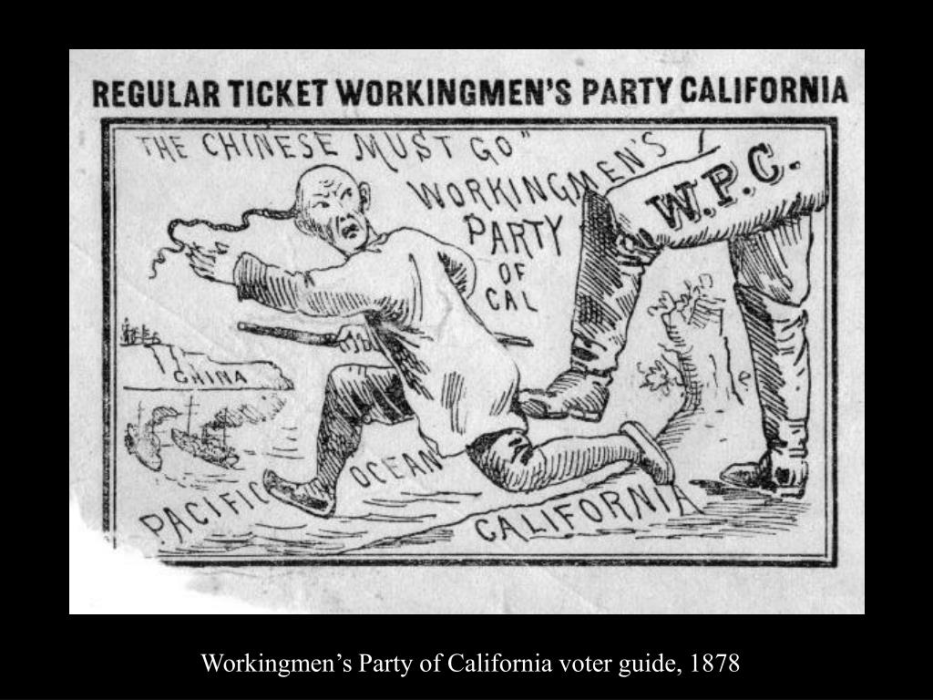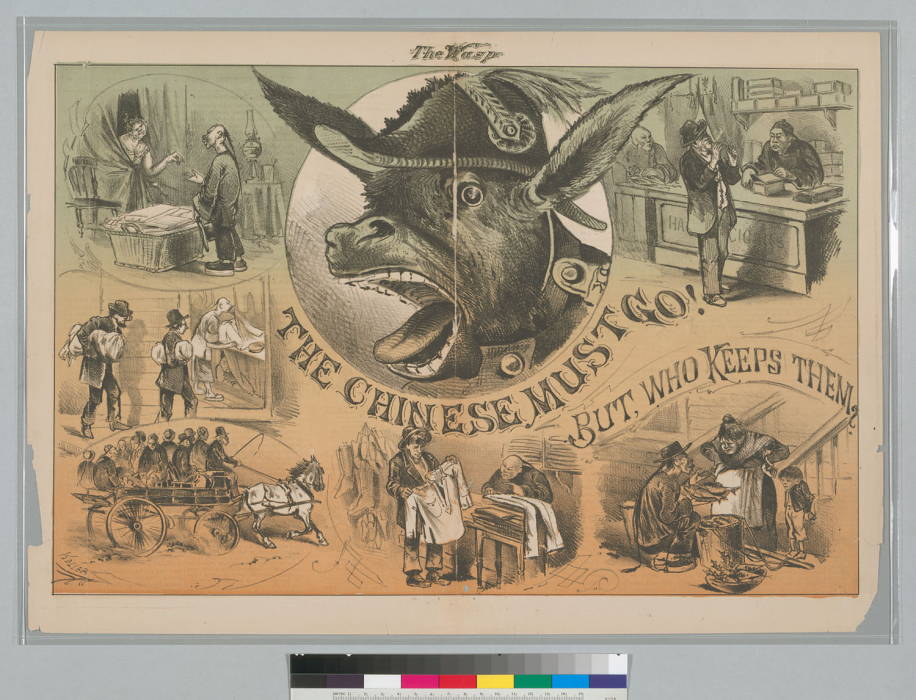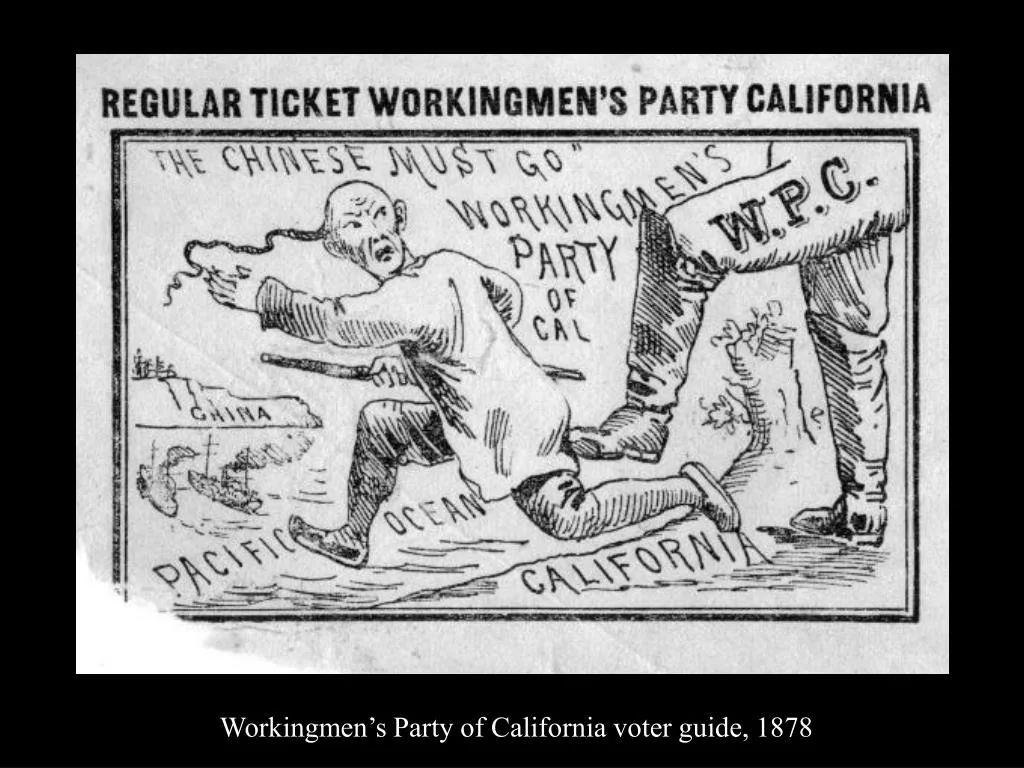This is a work in progress. I might be doing a reading/study group to learn about the anti-Chinese Movement of the 1800s.
I’m interested in this topic because it shows signs of a “horseshoe theory” where left and right merge; however, as noted in online debates, the horseshoe theory is false, because it ignores the position of workers of color, who end up scapegoated and oppressed, and their labor used to prop up some of the white workers.
At this time, I’m reading the following:
Sandemeyer, Elmer, The Anti-Chinese Movement (also Archive)
Yu, Connie Yung, Review of The Indispensable Enemy by Saxton
Carlsson, Chris, The Workingmen’s Party & The Denis Kearney Agitation
Lew-Williams, Beth, The Chinese Must Go (Audiobook)
Ngai, Mae, The Chinese Question (Audiobook)
Baldwin, S.L., Must the Chinese Go?
Planning to read:
Saxton, The Indispensible Enemy
Some Reasons for Chinese Exclusion: Meat Vs. Rice, American Manhood Against Asiatic Coolieism
Images and Video
PBS Learning Media, The Chinese Exclusion Act (Video)




| Year | China | Chinese in the US and other US History | Other Asians in the US | Asians Elsewhere |
|---|---|---|---|---|
| 1822 | British start growing tea in Assam, India | |||
| 1833 | Slavery abolished in England, coolie labor trade starts with workers from India and China | |||
| 1842 | First Opium War Hong Kong ceded to British Empire Britain farms opium in India to export to HK Start of The Century of Humiliation | |||
| 1848 | Mexican-American War Ends, California Annexed Gold discovered in California Chinese migration to California starts | British attempts to steal Chinese tea varieties to grow in India begin | ||
| 1849 | California becomes a State | Punjab annexed by British Empire | ||
| 1850 | Foreign Miners Tax | |||
| 1851 | Sam Yap Company benevolent association founded in SF | |||
| 1852 | Bigler’s anti-Chinese Speech to the Assembly | |||
| 1853 | Bulk of Chinese migration to Caribbean from 1853 to 1866, via British Empire | |||
| 1854 | Perry forces open trade with Japan with “gunboat diplomacy” | |||
| 1856 | Second Opium War | |||
| 1860 | US Civil War starts | |||
| 1862 | Leland Stanford Governor | |||
| 1863 | Transcontinental Railroad started Emancipation Proclimation ends slavery in US | |||
| 1865 | US Civil War ends, Reconstruction begins | |||
| 1868 | Burlingame Treaty | Tokugawa Shogunate overthrown, Meiji Restoration begin period of westernization in Japan | ||
| 1869 | Transcontinental Railroad completed (many now out of work) | |||
| 1871 | Los Angeles Chinatown Massacre | |||
| 1873 | Long Depression (until 1879 or 1899) | |||
| 1875 | Page Act | |||
| 1876 | Japan forces open trade with Korea with “gunboat diplomacy” | |||
| 1877 | Workingmans Party of California formed | |||
| 1880 | 1880s Plantation Life in Hawaii early Japanese migrants to Hawaii | |||
| 1882 | Chinese Exclusion Act | |||
| 1885 | Rock Springs Massacre | |||
| 1892 | First Sino-Japanese War | Geary Act (2nd Chinese Exclusion Act) | ||
| 1894 | Sun Yat Sen founds the Revive China Society in Honolulu | |||
| 1895 | Chinese American Citizens Alliance founded | |||
| 1898 | Wong Kim Ark case | Annexation of Hawaii by US Limited migration from Philippines starts | Spanish-American War Philippine-American War starts | |
| 1899 | Boxer Rebellion | First Sikhs from Punjab arrive in California | ||
| 1902 | First Korean laborers go to Hawaii | |||
| 1905 | Japanese and Korean Exclusion League formed | Russo-Japanese War ends | ||
| 1907 | 1907 Gentleman’s Agreement | |||
| 1909 | NAACP founded | |||
| 1910 | Japan Annexes Korea, migration to US stops | |||
| 1911 | 1911 Xinhai Revolution, Qing Dynasty overthrown | |||
| 1913 | Ghadar Party formed | After fall of Qing, Tibet asserts independence | ||
| 1912 | Taisho Democracy in Japan | |||
| 1919 | May Fourth Movement | Korean March First Movement for independence |
